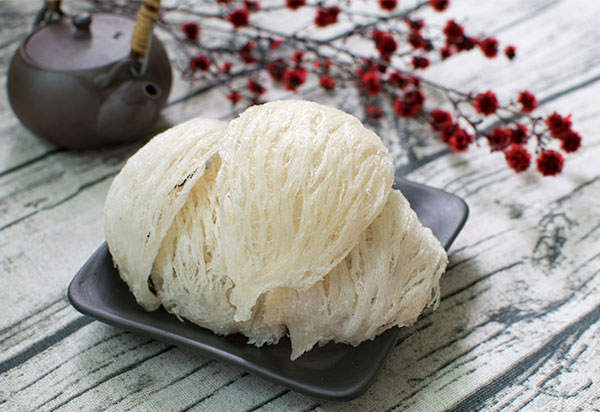News, PRODUCT CONSULTATION
9 Tips on How to Choose Quality Bird’s Nests Revealed by Sea People
## 9 Tips on How to Choose Quality Bird’s Nests Revealed by Sea People
Bird’s nest, often known as the “caviar of the East,” has been cherished in Asian culture for centuries for its rich nutritional value and health benefits. As a luxury food product, it can be challenging to discern high-quality bird’s nests from subpar ones, especially for new consumers. To help you make the best choice, the sea people—experts who have been harvesting bird’s nests for generations—share their secrets. Here are 9 essential tips on how to identify authentic, premium-quality bird’s nests.
—
### 1. **Understand the Source: Wild vs. Farmed Bird’s Nests**
One of the first things to understand is the difference between wild bird’s nests and farmed ones. Wild bird’s nests are harvested from natural caves, usually on steep cliffs by skilled climbers, while farmed nests are collected from specially designed birdhouses. Generally, wild nests are considered higher in quality due to their richer nutrient content and natural formation. However, farmed nests can still be a good choice if sourced from reputable farms that maintain ethical practices.
– **Tip**: Always ask about the source of the bird’s nests when purchasing. Opt for suppliers who are transparent about their harvesting methods and locations.
### 2. **Check the Color: White, Yellow, and Red Bird’s Nests**
Bird’s nests are available in different colors, mainly white, yellow, and red. White bird’s nests are the most common, while yellow and red varieties are rarer and more expensive due to their longer aging process. Contrary to popular belief, the red color is not due to blood; it results from oxidation of minerals within the nests over time.
– **Tip**: Be wary of bird’s nests that have overly vibrant colors, as they may have been artificially dyed. The color should be natural, with slight variations and not uniformly bright.
### 3. **Examine the Shape and Size**
High-quality bird’s nests are usually cup-shaped with a slightly concave center. The texture should be thick and firm, indicating the nest was well-formed. Poor-quality nests may appear flat, thin, or overly broken. While smaller fragments may be cheaper, they often lack the full nutritional benefits.
– **Tip**: Choose bird’s nests that have a consistent, curved shape. This indicates careful harvesting and handling.
### 4. **Assess the Texture: Dry and Brittle**
A good quality bird’s nest should feel dry and brittle to the touch. This indicates that it has been properly dried and stored. If the nest feels soft or damp, it may have absorbed moisture during storage, which could lead to mold growth or spoilage.
– **Tip**: Gently press on the nest. It should break or crack easily if it’s truly dry. If it feels rubbery, it may be of lower quality or improperly stored.
### 5. **Smell the Nest: Natural Aroma**
Authentic bird’s nests have a subtle, natural aroma reminiscent of dried fish or seaweed. If the nest has a strong, chemical, or artificial fragrance, it may have been treated with additives or bleaching agents to enhance its appearance.
– **Tip**: When buying bird’s nests, ask if you can smell the product before purchasing. A mild, natural scent is a sign of purity.
### 6. **Check for Impurities and Additives**
High-quality bird’s nests are minimally processed to retain their natural nutrients. Unfortunately, some suppliers bleach or add preservatives to enhance the appearance of the nests. Look for nests that are free from impurities, such as feathers or dirt, and avoid those that appear overly white or shiny, as they may have been chemically treated.
– **Tip**: Purchase from reputable brands that provide lab tests or certifications proving the purity of their bird’s nests.
### 7. **Test the Nest’s Solubility in Water**
Before cooking, bird’s nests should be soaked in water for a few hours. High-quality nests will gradually soften and expand while retaining their original shape. Poor-quality nests may disintegrate quickly or release a lot of sediment, indicating fillers or impurities.
– **Tip**: At home, soak a small piece of the bird’s nest in water. If it dissolves too fast or turns the water cloudy, it might not be genuine.
### 8. **Look at the Price and Packaging**
Quality bird’s nests are a luxury product, and their price reflects this. If a deal seems too good to be true, it probably is. However, high price doesn’t always guarantee quality. The packaging can also give clues about authenticity; reliable brands invest in proper packaging to preserve freshness and prevent contamination.
– **Tip**: Avoid bird’s nests sold in loose, unbranded packages. Choose suppliers who package their products securely, often with tamper-proof seals.
### 9. **Purchase from Trusted Suppliers**
Due to the high demand and cost of bird’s nests, counterfeit products are common in the market. To ensure authenticity, purchase from trusted, reputable suppliers who have a history of selling quality bird’s nests. Look for companies that provide certificates of authenticity or third-party lab reports.
– **Tip**: Seek recommendations from experienced users or online reviews to identify reputable sources. Be cautious when buying from online platforms with vague seller information.
—
### **Conclusion: Selecting the Best Bird’s Nests for Your Health**
Choosing high-quality bird’s nests requires some knowledge and vigilance. By following these 9 tips from experienced sea people, you can enjoy the benefits of this ancient delicacy without falling prey to scams. Remember, genuine bird’s nests are a nutritional treasure, packed with proteins, amino acids, and minerals that boost immunity, enhance skin health, and support overall well-being.
When you invest in bird’s nests, you’re not just buying a delicacy—you’re investing in your health. Take your time, do your research, and select the best product that fits your needs and budget.

